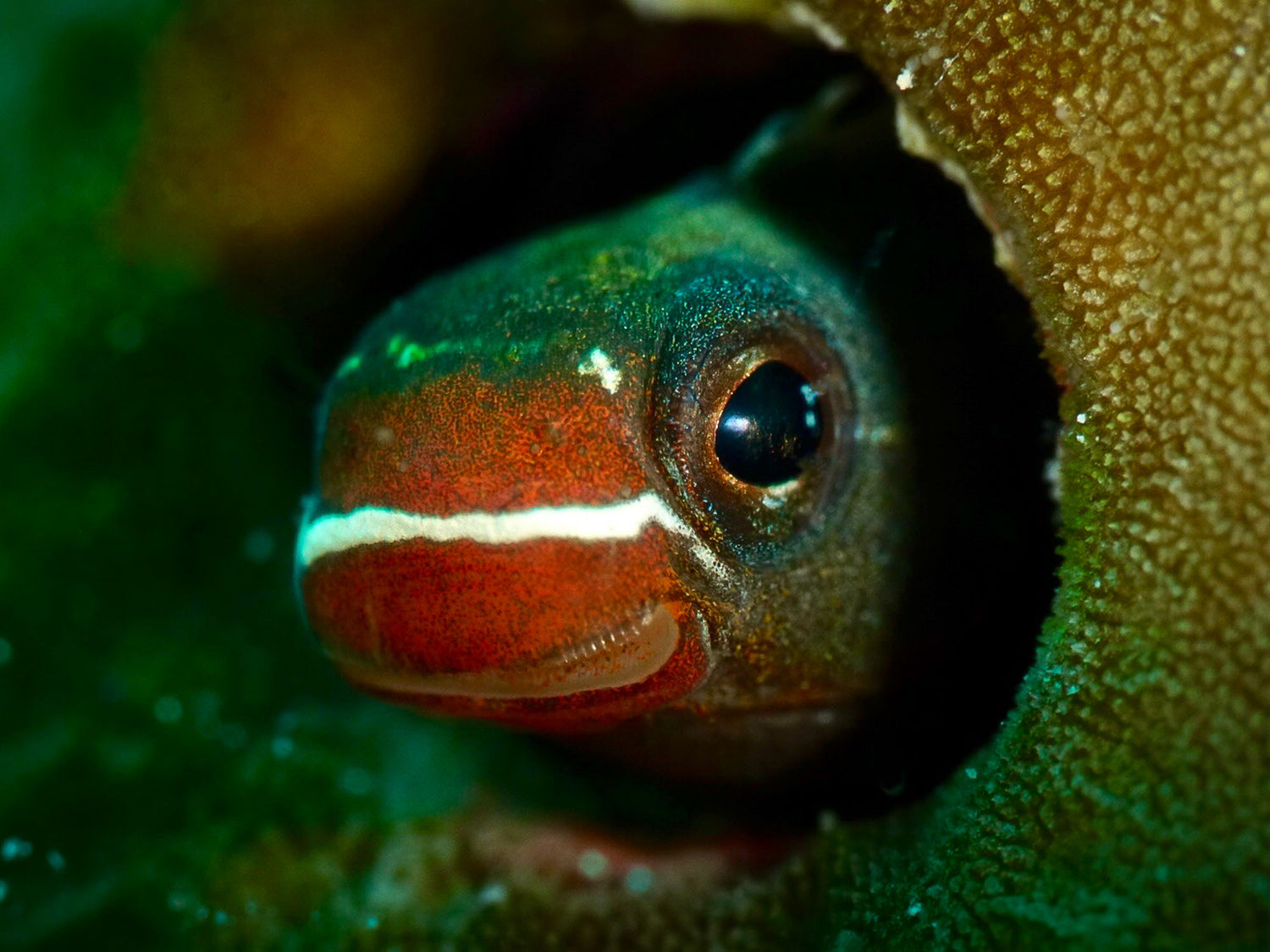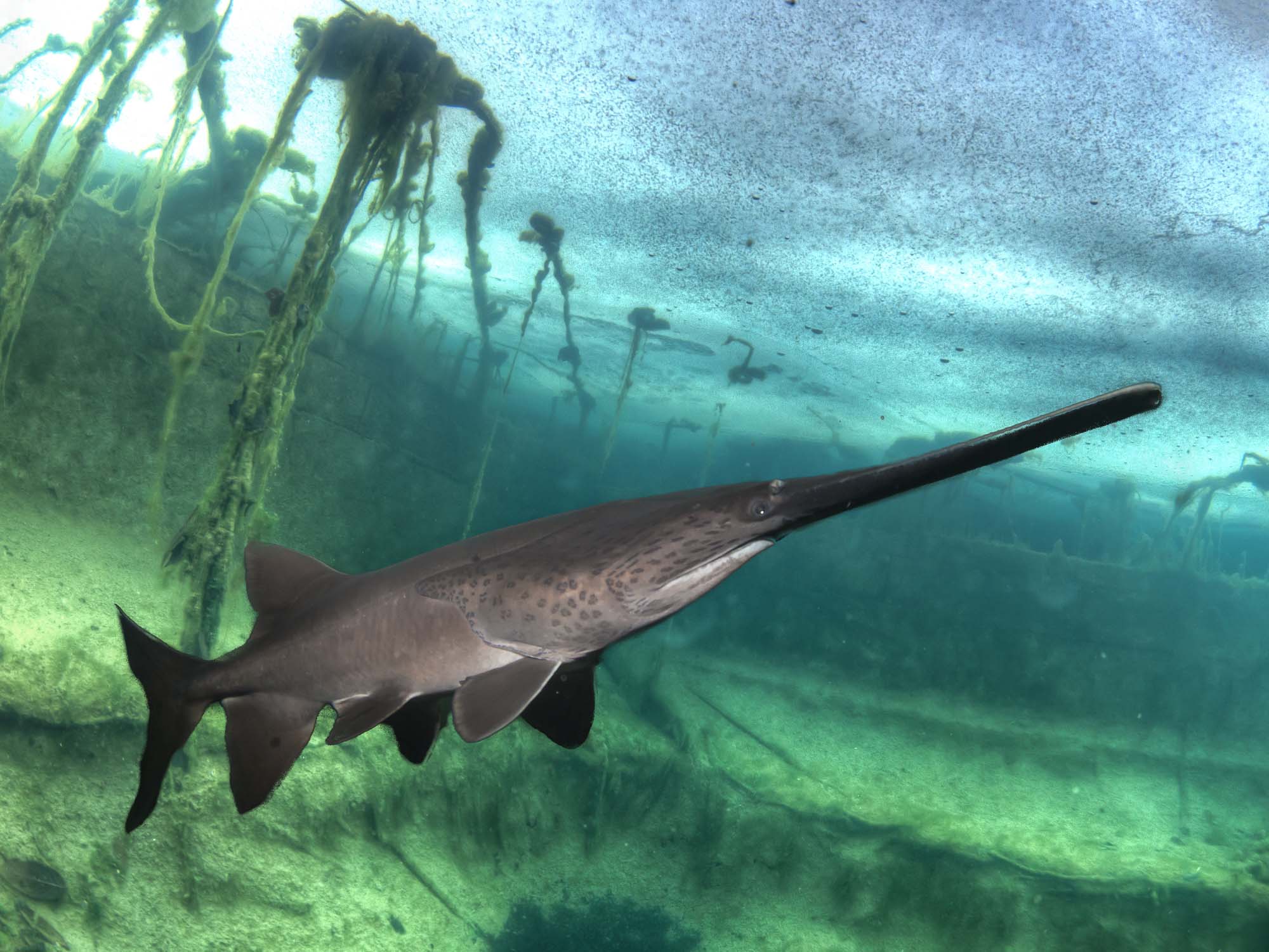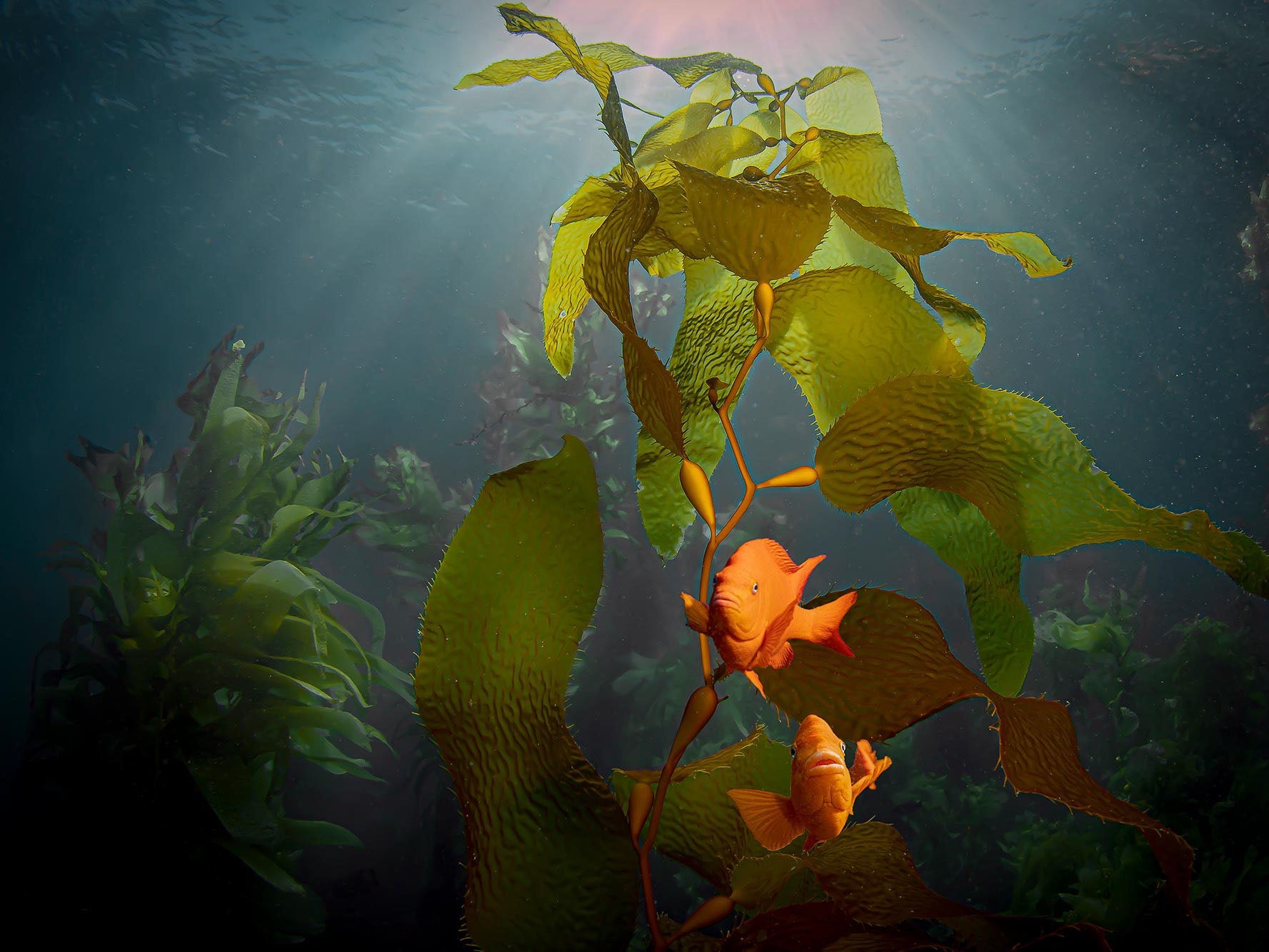You can find blennies in any ocean, and some freshwater or brackish locations. Blenny is the common name used to describe many different species of fish including Dragonets and Gobies. For the photographer, the common thread here is that they are territorial and have a "home." This means that you won't find them free swimming the reef much. Rather, you will find their hole which they retreat to when threatened. This means the photographer won't have to follow or chase them, but will simply need to be patient and wait for them to come out and pose for the camera.

The "home" that blennies stay in creates a natural frame for your composition. Once you have found a blenny's hole, you will need to wait for them to get comfortable enough to come out. It's worth the wait. © Steve Miller
DSLR + Mirrorless
ISO: 200-400. At 3-4 inches or so in length typically, these creatures require a macro lens, and therefore flash.
Mode: Manual for camera, set strobes to TTL.
Aperture: F-16 to F-22. Stopping down your lens will give you the greatest depth of field, which will come in handy as the focus tries to lock in on them while they pop in and out of their holes.
Shutter Speed: 1/125-1/160 flash synch.
Lens: A macro lens from 35mm to 100mm will be easiest to use here. The longer the focal length, the farther away you will be able to fill the frame with them.
Point + Shoot
ISO: 100 to 200
Mode: Manual if available on your camera, Aperture Priority if not.
Aperture: Stopping your lens down as far as possible will give you a larger in-focus area, so better chances at having the eye in sharp focus.
Shutter Speed: 1/125th flash synch is typical here, the flash will stop their motion.
Lens: Macro mode will be advantageous, microscope mode if you are luck enough to shoot super close. Positive diopter accessory or wet lenses are popular here.

Blennies come in a rainbow of colors and sizes. What makes them so fun to shoot is that they won't necessarily swim away, rather they will retreat to their hole. © Steve Miller
Technique
First you need to spot them. This will often be from yards away, since they swim up into the water column to grab bits of passing food- but then rush back down into their holes. Once you spot their territory, you dont need to watch them as they probably won't go far. Instead think about your scene- and specifically where you can hover or set for awhile while you wait for them to relax. This means you will have to be still for a few minutes until they get used to your presence and the sound of your bubbles.
Strobes
At these distances and with a stopped down lens, your strobe will create very dark shadows. Two strobes will give you a better chance at lighting them properly, but you may want to move them around, as the deep shadows can make the image stronger.

We usually use big strobes because we use them for other images, like wide angle. But for a scene the size of a finger nail, we need very little light. © Steve Miller
Additional Reading
Why Your Lens May Need a +4 Diopter Underwater
Macro with Black Background Underwater Camera Settings
Macro Close-Up Underwater Camera Settings
Underwater Exposure Explained | Aperture Settings [VIDEO]
Underwater Exposure Explained | Shutter Speed Settings [VIDEO]













